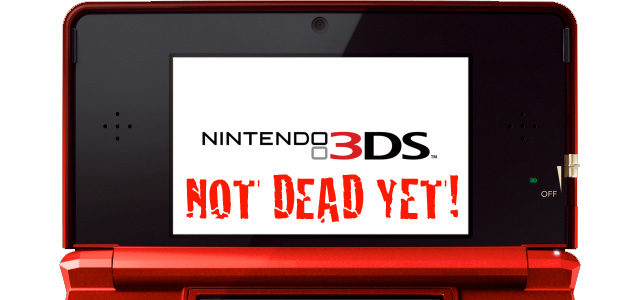
There’s been some talk recently about the state of portable gaming consoles. Namely, the general consensus is that the handheld dedicated gaming device is dead or dying, thanks to the increased pressure from mobile phones and tablets.
But, that may be a fairly exaggerated idea. Handheld gaming devices are far from dead, relying on evolutionary methods to compete in the crowded space. We can contribute their continued relevance to two factors: buttons and kids.
Buttons.
Yes, we need buttons to play games. No matter what motion control methods or touch screen improvements a portable device makes, the necessity for physical feedback is important for the near future. Modern mobile phones have all but removed buttons from the interface, save for the random PlayStation Phone or keyboard-happy Blackberry.
Sure, the types of experiences on mobile phones don’t necessarily require buttons, especially high-production games like Rage HD or The Secret of Monkey Island. But the majority of familiar lengthy “core” game experiences still do. Any rendition of Street Fighter or dual stick shooters or even Pac-Man Championship Edition proves this fact to be true, so until the new iPhones come with built-in configurable buttons they will not be able to deliver the experience that we prefer from a physical “click”.
Just TRY playing a Sonic game on the iPhone and you’ll understand.

Kids. Kids also have a huge effect on what the future holds for handheld gaming. While the tykes around us are increasingly becoming more efficient in dealing with new technology — heck, my 1-year old can already unlock my iPhone and place calls — the parents still control what games they play. And there is no Mario on the iPhone. Granted, there are a million renditions of Snood and Bratz and My Babiez, but there is no major market “Nintendo family game” that kids under 12 still look up to. Pokemon? That will only be on a Nintendo platform. Leave the Angry Birds on the iPod.
But there’s the rub: how do parents control what their kids play on an iPhone? Lock down the parental controls so that only the adults can purchase games? That defeats the purpose of an “always-ready” gaming device if the kids can’t purchase their own Family-approved games. Parents won’t let their children go wild buying apps, even if they’re rated “Family”.
It’s really a comparison of apples-to-oranges. The games that are popular on handheld game consoles don’t work on phones, and vice versa (whether technically or financially). The divide will be there for at least the rest of this generation of portables.
The 3DS isn’t dead before it’s born. Not as long as Pokemon, Mario, and Link sit under an umbrella with a big, parent-friendly N on it.

1 Comment